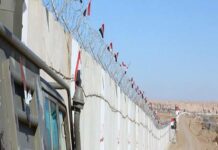
A growing wave of Islamic State attacks is threatening Syria’s uneasy path toward stability, with 96 operations claimed by the group in 2025 alone, according to a recent Foreign Policy article by Middle East analyst Charles Lister. The resurgence follows the fall of Assad’s regime and comes at a time when the country’s leadership faces mounting security and political challenges.
Foreign Policy Warns Group Exploits Power Vacuum and Sectarian Rifts
ISIS, once thought to be in retreat, has recalibrated and returned with calculated precision. Lister’s analysis outlines a sharp increase in activity since January, when just two attacks were recorded. By May, that number had climbed to 38, mostly concentrated in the country’s northeast, where the US-backed Syrian Democratic Forces (SDF) operate within Autonomously Administered North Eastern Syria (AANES) sphere of control. Foreign Policy reports that 94% of ISIS attacks this year have targeted SDF-held areas.
This resurgence is in the wake of a high-profile visit to Damascus by Thomas Barrack, US President Trump’s special envoy to Syria, who arrived with military officials on May 29. His visit signaled Washington’s concern that ISIS remains a central obstacle to peace in Syria.
Instability Creates Opportunity for Extremist Expansion
AANES areas have become the epicenter of ISIS activity, with tensions growing between the SDF-led authorities and the region’s Sunni Arab population. Lister attributes much of the group’s momentum to these unresolved fractures, which have created openings for recruitment and infiltration.
A deadly IED blast on June 1 that killed three SDF fighters escorting oil tankers between Raqqa and Hasakeh highlights the group’s renewed capabilities. ISIS also launched its first successful car bomb attack in two years on May 18, targeting a police station in Mayadin. These incidents indicate the reestablishment of logistical networks for bomb-making and arms distribution.
National and Regional Response Attempts to Contain Threat
Syrian security forces have responded with a series of raids. On May 17, General Security Administration (GSA) units in Aleppo seized explosives and suicide vests. A week later, a Damascus suburb operation uncovered advanced weaponry, including anti-tank and surface-to-air missiles.
ISIS activity is also expanding geographically. In Suwayda, a province untouched by the group since 2018, three IED attacks have occurred in recent days. Meanwhile, in eastern Aleppo, ISIS has targeted prison facilities near areas where government-SDF negotiations are underway.
Long-Term Peace Requires Political Inclusion
Despite increased military cooperation between Syria, Turkey, Jordan and the US-led coalition, Lister argues that force alone cannot dismantle ISIS. The group has historically exploited instability and sectarian divides. Without a credible, inclusive post-Assad government, Foreign Policy warns, Syria may once again become fertile ground for extremist resurgence.
Lister posits that the only lasting antidote to terrorism is a state that reflects the country’s full spectrum—ethnically, politically and socially. Whether Syria’s transitional leadership can deliver on that promise remains uncertain.








